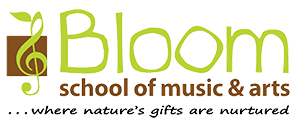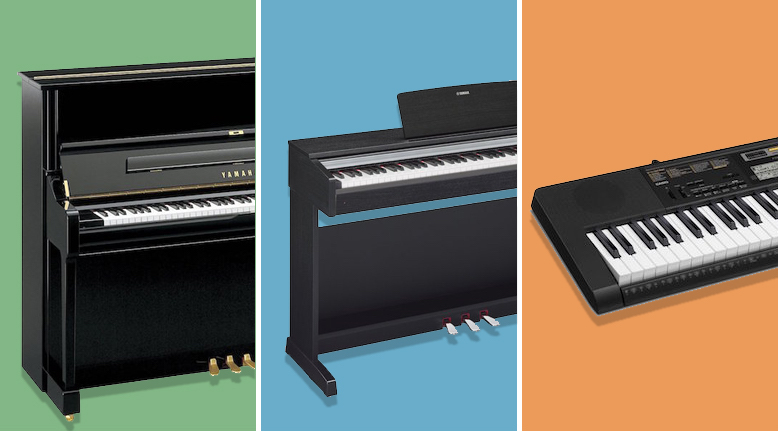Trivial Trivia – Digital Piano
In one of our previous Trivial Trivia, we learnt about the piano and how it works. In this post, let us take a look at the difference among the acoustic piano, digital piano, and the keyboard.
The term ‘acoustic’ was added after the advent of digital pianos. The acoustic piano has been around since the 1700s, and is the original form of piano playing. The piano has the properties of both a percussion instrument and a string instrument:
When you press one of the 88 keys, you cause a small hammer inside the piano to hit string(s)—3 strings for high notes, 2 for lower notes and 1 for very low notes, which then vibrate and make a sound that is tuned to a specific note. The vibration of the string(s) is passed onto the soundboard, leading it to resonate and amplify the sound. When you release a key, the damper, usually covered with a felt pad, returns to its place on the string(s) to prevent the keys from vibrating when they are not being played.
Electronic Keyboard
Electronic keyboards are smaller than an acoustic piano, with a range of 25-, 49-, or 61-key (3-6 octaves). It is usually portable because the keys are smaller, lighter, and easier to press than the acoustic piano’s, making it an affordable way to start on the piano. Keyboards are like mini synthesizers (pre-loaded with lots of instrument sounds and even pre-recorded rhythm tracks), and have the ability to interact easily with computers via MIDI (Musical Instrument Digital Interface) or USB connections.
Digital Piano
The most notable release of digital pianos is Yamaha’s Clavinova YP-40, produced in 1983. The more popular and reliable manufacturers of digital pianos are Yamaha, Roland, Kawai and Casio.
A digital piano is a combination of an acoustic piano and an electronic keyboard. It is larger than a keyboard, has an 88-key length, and “weighted keys” to emulate the feel of an acoustic piano. Digital pianos have built-in speakers—improving sound quality, offer greater variation in sounds because they allow for sound modification, and have a MIDI output that enables you to record and edit your play, add additional parts, and control other instruments.
A digital piano is less expensive than an upright acoustic piano, and requires less maintenance than an acoustic piano, making it the best choice for a beginning pianist on a budget. Another popular feature of a digital piano is its capacity for silent playing, allowing the pianist to practise (even late at night!) without disturbing others.
There are three types of digital pianos:
1. Upright digital piano
- resembles an upright acoustic piano
- furniture-style units containing the keyboard unit and a permanent stand that houses the foot-pedals and the speakers
- user interface that allows the pianist to choose between the various features of the piano, and also to control the different on-board voices
- volume controls
2. Stage piano
- designed to be portable
- popular with professional, touring musicians
- cheaper to buy than upright digital pianos, and have equivalent functionality
- requires additional foot-pedals
- digital screens and internal speaker system
3. Grand digital piano
- resembles a classic grand piano, minus the high-maintenance
- easy to move and does not need tuning
- volume control
- same sounds as an acoustic grand piano
- keyboard action simulates the feel of an acoustic grand piano
Rob Beck of Beginner Guitar HQ has a comprehensive guide with practical tips and advice on choosing a digital piano, and you can read it in full at the link below. I hope I have helped you in learning more about digital pianos, and what the differences are, so you will eventually be able to make an informed decision before buying. When you are ready to buy, Swee Lee has a good range of Roland digital pianos to choose from.
To get started on your piano education, drop by Bloom School of Music & Arts to find out our schedule. Or fill in this Online Form for a free assessment:
What has keys but can’t listen to the beauty it unlocks?
A piano.
– Jarod Kintz
References:
How to Choose a Digital Piano – 10 Factors to Consider According to Science: https://beginnerguitarhq.com/digital-piano/
Digital Pianos FAQ: http://www.roland.co.uk/blog/digital-pianos-faqs/




















